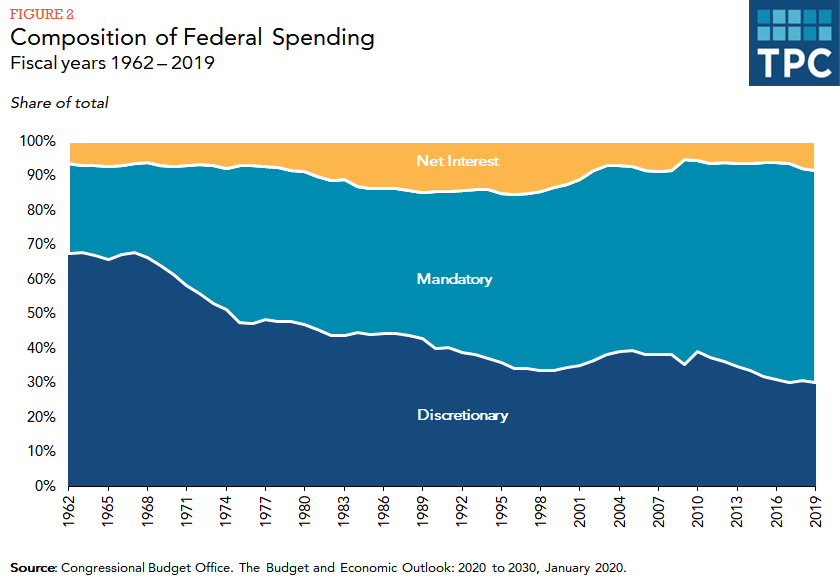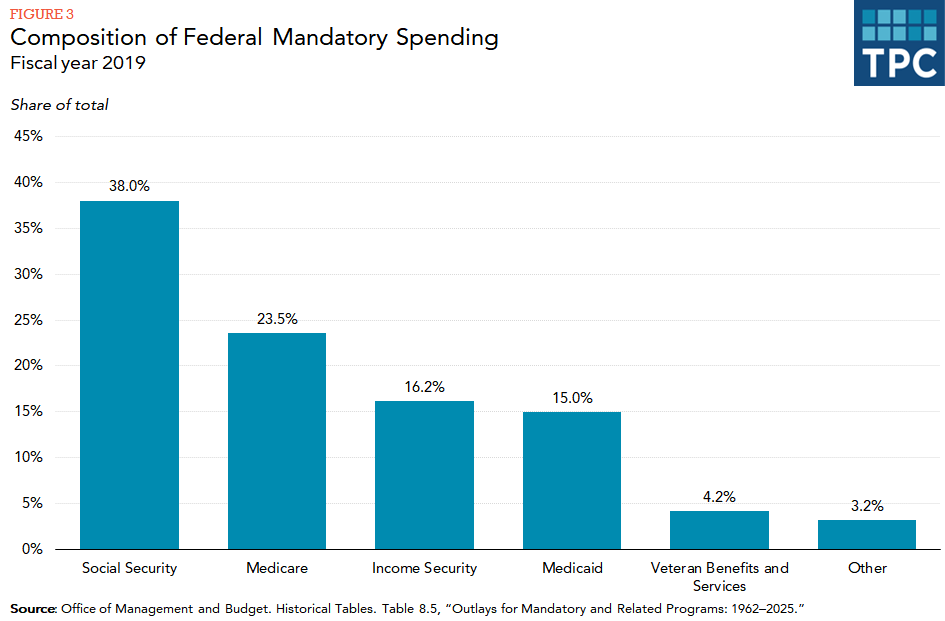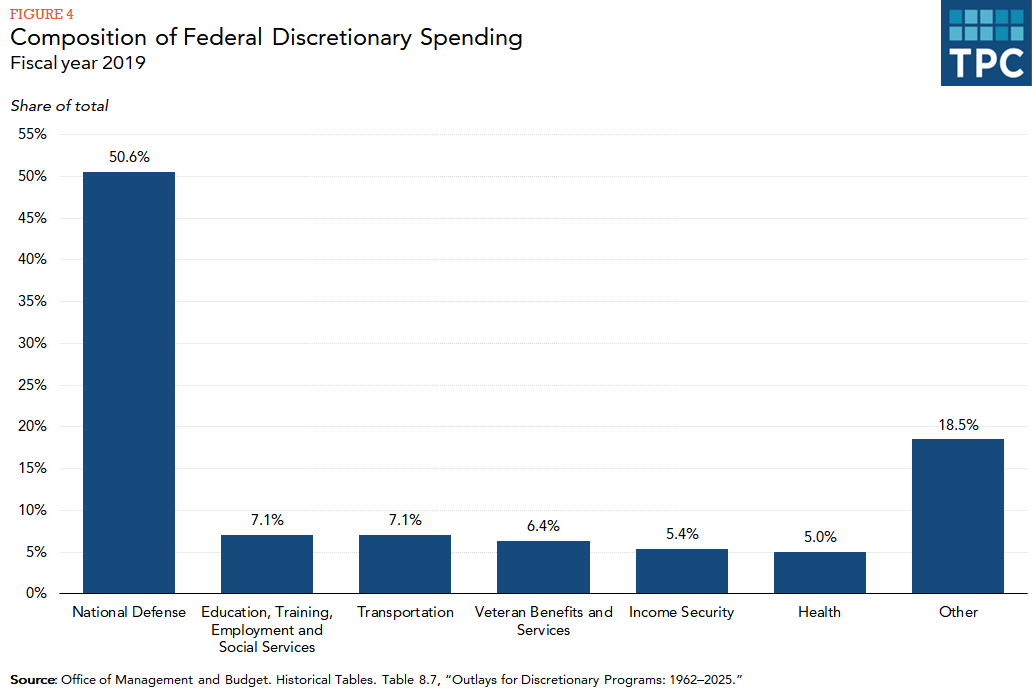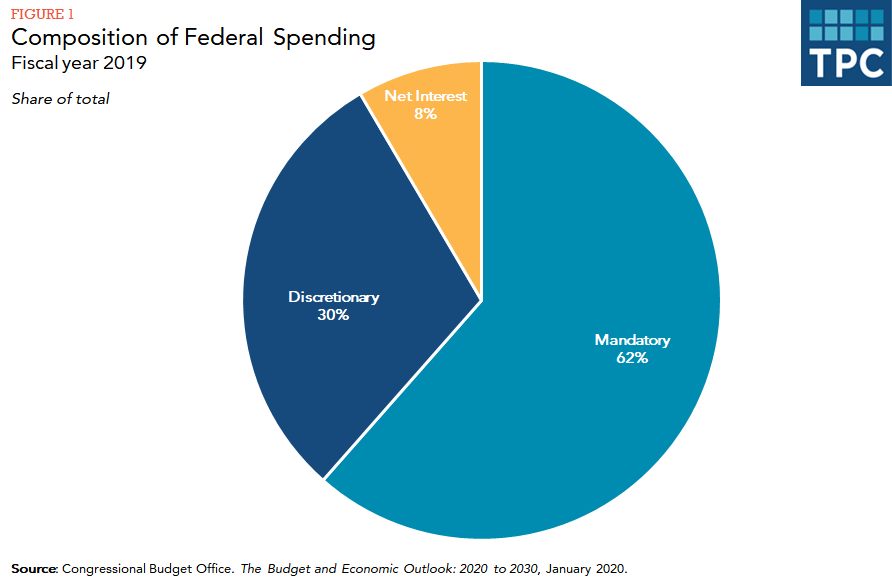Where Does Our Tax Money Go Pie Chart
Mandatory Spending
Mandatory spending covers outlays controlled by laws other than appropriations acts. Almost all such spending is for "entitlements," for which expenditures depend on individual eligibility and participation; they are funded at whatever level needed to cover the resulting costs. Mandatory spending has grown from about 31 percent of the budget in 1962 to 61 percent in 2019 (figure 2). This is largely because of new entitlements, including Medicare and Medicaid (both of which started in 1965), the earned income tax credit (1975), and the child tax credit (1997). In addition, rapid growth of both the elderly and the disabled populations has contributed to increased Social Security and Medicare spending.

Nearly 60 percent of mandatory spending in 2019 was for Social Security and other income support programs (figure 3). Most of the remainder paid for the two major government health programs, Medicare and Medicaid.
Discretionary Spending
Discretionary spending covers programs that require appropriations by Congress. Unlike mandatory spending, both the programs and the authorized levels of spending require regular renewal by Congress. The share of the budget going for discretionary spending has fallen from two-thirds in 1962 to about 30 percent now.
More than half of FY 2019 discretionary spending went for national defense, and most of the rest went for domestic programs, including transportation, education and training, veterans' benefits, income security, and health care (figure 4). About 4 percent of discretionary spending funded international activities, such as foreign aid.

Debt Service
Interest on the national debt has fluctuated over the past half century along with the size of the debt and interest rates. It climbed from 6.5 percent of total outlays in 1962 to more than 15 percent in the mid-1990s, fell to 6.1 percent in 2015, but climbed back to 8.4 percent by 2019 (figure 2). Since 2016, historically low interest rates have held down interest payments despite the national debt reaching a peacetime high of nearly 80 percent of GDP in 2019. But interest payments as a share of outlays are projected to rise because of projected increases in both the national debt and interest rates.

Updated May 2020
Data Sources
Congressional Budget Office. 2020. "Budget and Economic Outlook: Fiscal Years 2020 to 2030," Appendix E: Historical Budget Data. Washington, DC: Congressional Budget Office.
Office of Management and Budget. 2018. Historical Tables. Table 8.1, "Outlays by Budget Enforcement Act Category: 1962–2025," Table 8.5, "Outlays for Mandatory and Related Programs: 1962–2025," and Table 8.7, "Outlays for Discretionary Programs: 1962–2025."
Where Does Our Tax Money Go Pie Chart
Source: https://www.taxpolicycenter.org/briefing-book/how-does-federal-government-spend-its-money
Posted by: brustbronds.blogspot.com


0 Response to "Where Does Our Tax Money Go Pie Chart"
Post a Comment